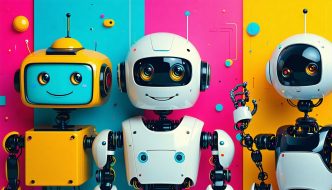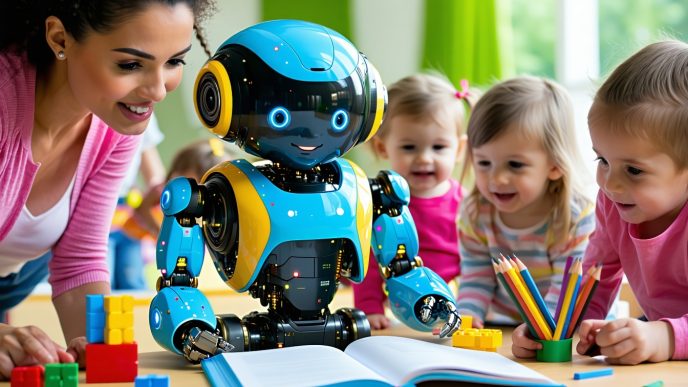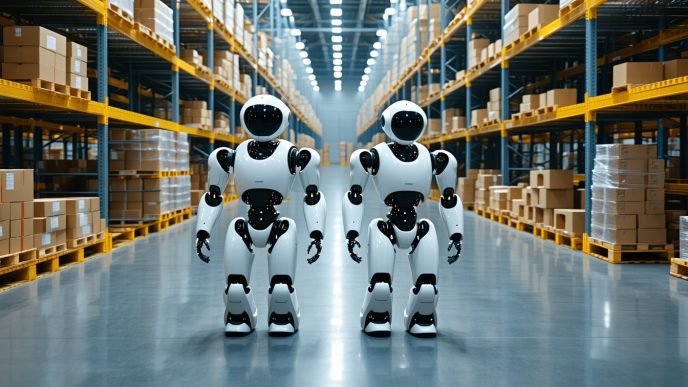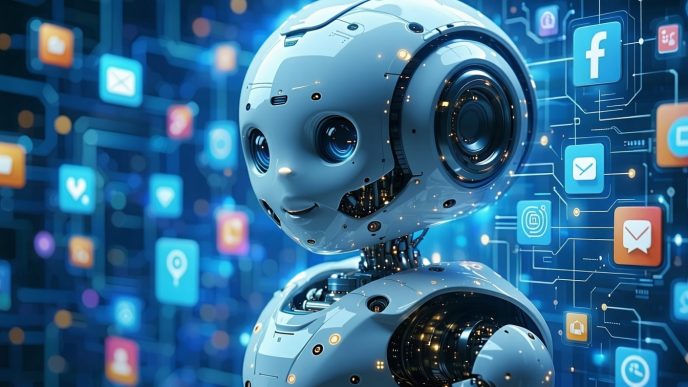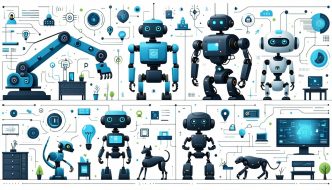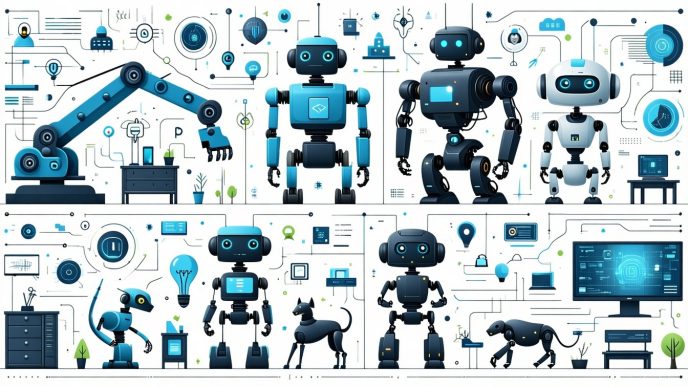Evolution of Humanoid Robots
The Rise of Humanoid Robots
Humanoid robots have dramatically evolved over the past few decades, transitioning from basic, mechanical designs to advanced, human-like robots. This advancement is largely attributed to breakthroughs in artificial intelligence, robotics, and materials science. Initially, these robots served specific tasks in factories and industries. Today, their applications include personal assistants, companions, and healthcare aides. The demand for humanoid robots for home use has surged, reflecting a growing interest in integrating these machines into everyday life.
Historically, the very first humanoid robots appeared in the mid-20th century, focusing primarily on movement and functionality. Notable milestones include:
| Year | Robot | Description |
|---|---|---|
| 1970s | WABOT-1 | First humanoid robot capable of basic communication and movement. |
| 1996 | ASIMO | Developed by Honda, featured advanced walking and running abilities. |
| 2016 | Sophia | AI-driven robot known for its realistic appearance and ability to engage in conversation. |
| 2022 | Tesla Optimus | Aims to assist with various tasks in homes and workplaces. |
Importance of Personalities in Robots
As humanoid robots become more prevalent, the importance of their personalities becomes increasingly apparent. Robot personalities are essential for fostering positive human-robot interactions. When robots exhibit personalities, they can evoke emotional responses in users, leading to stronger connections and improved user experiences. This emotional engagement can significantly enhance their usability in environments like elder care or education, fostering trust and comfort.
Furthermore, brands are beginning to incorporate robot personalities into their marketing strategies. A well-defined personality can differentiate a robot in a crowded marketplace, affecting how consumers perceive the brand. For example, a robot designed for companionship may have a warm and friendly persona, whereas a robot intended for security might adopt a more authoritative demeanor.
The table below illustrates how various robot personalities can impact branding strategies.
| Robot Personality | Target Market | Branding Strategy |
|---|---|---|
| Friendly | Families, children | Emphasize warmth and companionship. |
| Professional | Healthcare, business | Highlight reliability and efficiency. |
| Fun | Entertainment | Focus on innovation and creativity. |
The development of robot personalities and branding plays a pivotal role in shaping future robot designs and interactions. Integrating diverse personalities will not only improve user satisfaction but also pave the way for more complex roles within society, such as in healthcare and elder care.
Creating Robot Personalities
The development of robot personalities is a complex process that involves various factors and methods. This section explores the influences on robot personalities, the techniques for developing them, and the ethical considerations that come into play.
Factors Influencing Robot Personalities
Several elements shape the personality traits of humanoid robots. Understanding these factors is crucial for creating robots that can resonate with users.
| Factor | Description |
|---|---|
| Target Audience | The demographics and preferences of potential users influence the robot’s personality. For instance, a robot designed for children may adopt a friendly, playful demeanor, while one intended for a professional setting might be more reserved and formal. |
| Functionality | The primary tasks the robot is created to perform can influence its personality. Service robots may showcase helpfulness and empathy, while industrial robots may exhibit efficiency and precision. |
| Social Interaction | The level of interaction expected from users can affect personality traits. Robots intended for companionship may be programmed with emotional responses, whereas others might focus on delivering information without emotional context. |
Methods for Developing Robot Personalities
Creating effective robot personalities incorporates various techniques to ensure they meet user expectations and enhance user experience.
| Method | Description |
|---|---|
| Programming AI Models | Utilizing advanced AI models allows robots to simulate realistic behaviors and responses. These models can be trained on diverse datasets to develop interaction patterns that align with intended personalities. |
| Voice Interfaces | The choice of voice can greatly affect a robot’s personality perception. A soft, friendly voice can make a robot appear more approachable, while a firm, authoritative voice may convey professionalism. For more on voice interfaces, see our article on voice interfaces in humanoid robots. |
| Customization | Allowing users to customize aspects of their robots can foster a personal connection. This could include choosing specific traits or customization options that resonate with individual preferences. Explore more about personalization in our article on humanoid robot customization. |
Ethics and Considerations
The creation of robot personalities raises various ethical concerns that must be addressed to ensure responsible development and deployment.
| Ethical Consideration | Description |
|---|---|
| Emotional Manipulation | Designers must be cautious to avoid creating robots that manipulate human emotions for commercial gain. The risk of dependence on robots for companionship or support is a critical concern. Discuss more on this in our article about robot emotions and ethics. |
| User Privacy | Robots that gather personal data to enhance their personalities must prioritize user privacy and security. Clear guidelines on data usage should be established to build trust with users. See our discussion about humanoid robots and privacy. |
| Societal Impact | The rapid integration of robots into daily life can alter societal dynamics. Addressing the implications of human-robot relationships is vital to prevent potential societal divide or dependency. |
By understanding these factors, methods, and ethical considerations, brands can effectively create robot personalities that enhance user interaction and satisfaction. The development of these personalities plays a pivotal role in the broader context of robot personalities and branding.
Brands and Robot Personalities
As humanoid robots gain popularity, brands recognize the importance of creating distinct personalities for their robots. This strategic approach not only enhances user engagement but also fosters a connection between humans and robots.
Branding Strategies for Humanoid Robots
Brands employ various strategies to establish a memorable identity for their humanoid robots. Factors such as target audience, intended use, and cultural relevance guide these branding initiatives. Some common strategies include:
| Strategy | Description |
|---|---|
| Narrative Development | Crafting compelling backstories or narratives that resonate with users. |
| Character Design | Designing visual features that evoke specific traits or emotions. |
| Interaction Style | Defining how the robot communicates and interacts with users. |
Narrative development often plays a vital role in connecting emotionally with consumers. For instance, a robot designed for elder care may have a nurturing backstory to emphasize its comforting presence. Brands focusing on household robots typically highlight user-friendliness and efficiency. This helps position the robot as a reliable companion in everyday tasks, leading to better acceptance.
Unique Personalities in Marketing
Marketing campaigns that showcase unique robot personalities can effectively capture attention and enhance brand recognition. These personalities can range from friendly and approachable to authoritative and efficient, depending on the robot’s role. Notable aspects of branded robots include:
| Personality Trait | Example Use |
|---|---|
| Playful | Robots designed for education or companionship often adopt playful personas. |
| Professional | Robots used in logistics or security settings emphasize a serious, authoritative demeanor. |
| Empathetic | Robots in healthcare or elder care possess traits that convey empathy and understanding. |
For example, a robot programmed for educational purposes might use playful language and animations to engage children. This approach not only makes learning fun but also creates a positive emotional association with the brand. On the contrary, a robot functioning in security may embody a serious personality, reassuring users of its effectiveness and reliability.
Creating distinct robot personalities has proven beneficial for brands marketing humanoid robots. By integrating these strategies, companies can achieve a competitive edge while fostering meaningful connections with users. Understanding the implications of such branding can lead to enhanced interactions and a better grasp of consumer preferences in the realm of humanoid robots for home use.
Human-Like Behaviors in Robots
The integration of human-like behaviors in robots enhances their ability to interact effectively with people. By incorporating emotions, language, and customization options, robots are becoming more relatable and functional in various applications.
Emotions and Expressions
The development of emotional capabilities in robots is critical for fostering strong human-robot relationships. Robots that can recognize and replicate human emotions can respond more effectively to users, creating a comforting environment. This capability is often achieved through the use of advanced sensors and algorithms that analyze human facial expressions and body language.
The table below outlines common emotional expressions that robots can simulate:
| Emotion | Description |
|---|---|
| Happiness | Displayed through smiling and a relaxed demeanor |
| Sadness | Shown by frowning and lowered body posture |
| Surprise | Expressed with raised eyebrows and wide eyes |
| Anger | Demonstrated through furrowed brows and tense posture |
| Fear | Indicated by wide eyes and defensive body language |
Robots capable of emotional expression are seen in various settings, such as healthcare and elder care, enhancing their role as companions. For example, exploring the use of humanoid robots in elder care shows promise in improving the quality of life for seniors. Visit our article on humanoid robots in elder care for more insights.
Language and Communication
Effective communication is vital for humanoid robots, enabling them to convey information and interact with users seamlessly. Robots equipped with natural language processing (NLP) can understand and respond to human speech, making them more functional in personal and professional environments.
The following are key features of communication within humanoid robots:
| Feature | Description |
|---|---|
| Voice Response | Ability to generate spoken responses to user queries |
| Multi-Language Support | Capability to understand and speak multiple languages |
| Context Awareness | Ability to respond appropriately based on situational context |
An example of language integration can be found in smart home robots, which use communication technologies to control smart home devices effectively. Review our article on humanoid robots for smart homes for further details.
Personalization and Customization
Personalization enhances the user experience by allowing individuals to customize their humanoid robots. This adaptability caters to specific needs and preferences, making robots more effective in their roles. Users may adjust settings related to voice, appearance, and interactions, creating a more familiar and friendly experience.
Consider the following customization options available for humanoid robots:
| Customization Aspect | Description |
|---|---|
| Voice Selection | Users can choose from different voice types |
| Physical Appearance | Options for changing visual features like attire |
| Personality Traits | Customizable responses and behavior styles |
By focusing on these features, developers can create robots that are not only functional but also resonate emotionally with users. For a deeper look into robot customization, explore our article on humanoid robot customization.
Integrating human-like behaviors is vital for enhancing the interaction between robots and people. By focusing on emotions, communication, and customization, brands can create robot personalities that cater to user needs and preferences, significantly impacting how robots are perceived in society. For insight into branding, refer to our section on robot personalities and branding.
Impact on Society
The integration of humanoid robots into daily life presents both opportunities and challenges for society. Understanding how these robots are accepted and how they interact with humans is key to their successful implementation.
Acceptance and Integration
Acceptance of humanoid robots varies widely among different demographics. Factors such as familiarity with technology, cultural norms, and perceived usefulness play a significant role in how these machines are embraced.
| Demographic Factor | Acceptance Level (%) |
|---|---|
| Tech Enthusiasts | 85 |
| General Public | 60 |
| Older Adults | 45 |
| Children | 70 |
Research indicates that individuals who have had positive experiences with technology are more likely to accept humanoid robots in their environments, such as in homes or workplaces. Additionally, education about the benefits and functionalities of these robots can aid in reducing fear and skepticism. Resources discussing humanoid robots for home use can provide insights into how these integrations can enhance daily living.
Implications on Human-Robot Interaction
The presence of humanoid robots with distinct personalities affects how they are perceived and interacted with by humans. Robots designed with emotional recognition and responsive communication can create more genuine interactions. Such capabilities enhance user experience and improve collaboration in various settings, especially in elder care and educational environments.
| Interaction Aspect | Significance Rating (1-10) |
|---|---|
| Emotions and Expressions | 9 |
| Language and Communication | 8 |
| Personalization and Customization | 7 |
Humanoid robots that can display appropriate emotions tend to engage users more effectively, leading to a positive influence on relationships between humans and machines. For instance, robots in healthcare settings can provide companionship, reducing feelings of loneliness among patients. Further exploration of the effects of robot emotions and ethics is crucial to ensure sensitive integration into society.
As societal norms evolve, the implications of human-robot interaction will reshape industries, education, and personal relationships. Keeping pace with these developments is essential for businesses and individuals alike. For more insights on how humanoid robots are being utilized across various sectors, consider reviewing articles on humanoid robots in healthcare and humanoid robots for companionship.
